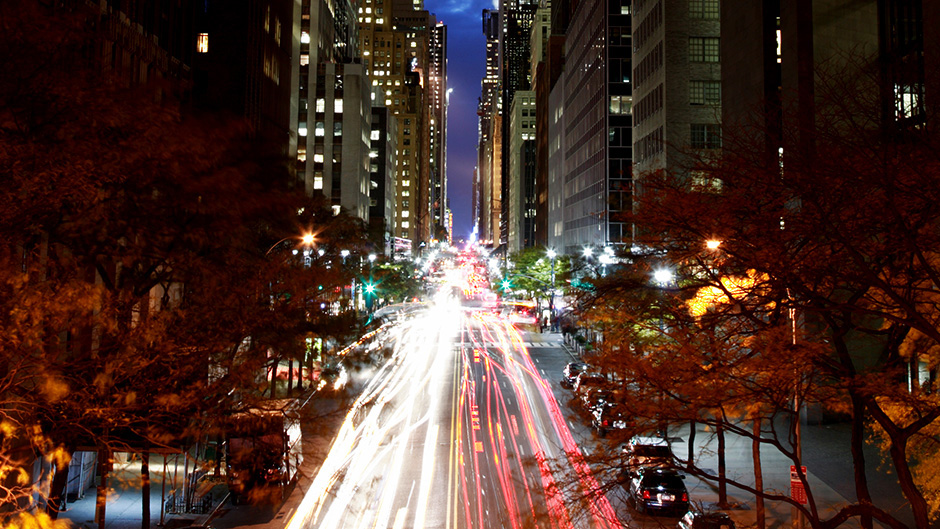
Publication
FTC continues enforcement focus on non-competes
The FTC has continued its focus on antitrust issues.


Global | Publication | December 21, 2017
New York State is now open for autonomous vehicle testing, and interested companies can begin testing autonomous vehicles on New York State highways and streets right away. However, this opportunity will not be available for long—companies are only permitted to conduct testing through March of 2018, when the law is set to expire, unless the program is otherwise expanded to future years. Below are some details of this testing law as well as information about other aspects of New York’s automotive rules and regulations.
Set to expire on April 1, 2018, New York’s new, unnamed autonomous vehicle law, which amends New York’s 2018 budget,[1] permits any manufacturer of autonomous vehicle technology or any entity creating such technology and working with a manufacturer to apply for permission to test or demonstrate autonomous vehicles on New York roadways. Interested companies must fill out two applications forms, totaling four pages, and located at the New York Department of Motor Vehicles.
The application requires a listing of the vehicles that will be using for testing, and should indicate the vehicle’s level of automation according to SAE International’s six levels of automation, which rates driving automation from level 0 (no automation), to level 5 (full automation). Currently, only vehicles with an SAE level of 1-4 are eligible for testing in New York State. The vehicles listed on the application must comply with all federal motor vehicle safety standards and New York State inspection standards. The vehicle must have at least a five million dollar insurance policy, and proof of coverage should be included with the application. Applicants also need to submit details to the New York State Police about the test vehicle operators, and the planned test route, including the date, time, origin, destination, sequence of roads, and total route distance in miles to the nearest 1/10 mile. The route may not include construction or school zones. Note that the New York State police are required by law to directly supervise all demonstrations and tests.
It is important to keep in mind that New York State requires a licensed driver in the driver’s seat while the vehicle is operated on public highways, and a second person in the passenger seat.[2] The driver need not have a hand on the wheel, but must be prepared to take control if necessary to operate the vehicle safely and lawfully.
After the testing is completed, a safety report must be submitted to the Commissioner of Motor Vehicles by March 1, 2018. The report must include the date(s), parameters, location(s), and total miles traveled in connection with the demonstrations and tests. In addition, any findings related to the test’s impact on safety, traffic control, traffic enforcement, emergency services also must be included.
Thus far, less than a handful of companies have taken advantage of this new law. Audi was the first: conducting a demonstration of its self-driving A7 prototype in Albany, New York. During Audi’s demonstration, a driver manually operated the vehicle from State Street in the center of Albany to Interstate-90, “where the Audi Highway Pilot technology was initiated, enabling automated driving for approximately 6.1 miles before a safe return to the Empire State Plaza.”[3]
Cadillac also has taken advantage of this testing law and used 12 vehicles equipped with its Super Cruise automation in September 2017. The vehicles drove from the Cadillac House in lower Manhattan to California.[4]
GM’s application was recently approved allowing it to begin testing its Cruise Automation technology in New York City in early 2018. GM will be the first company to test Level 4 autonomous vehicles in the state. The testing will occur in a geo-fenced area in Manhattan.[5]
New York’s testing law allows manufacturers to test their technologies in real-life situations and in unique conditions. Historically, testing of autonomous vehicles in the United States has been done in states with dry, arid climates that see little rain or snow, as these weather conditions adversely affect autonomous sensors.[6] However the New York region experiences 30-50 inches of rainfall and over 40 inches of snow annually.[7] As such, the testing can highlight particular issues for a vehicle’s systems in rainy and snowy conditions.[8] The testing also may provide useful insights into what driving adjustments need to be made in wet or icy road conditions.
Testing in New York City presents its own distinct challenges. Traffic accidents due to confusion with pedestrians and bicyclists are not uncommon, and autonomous vehicles must navigate car lanes, bicycle lanes, and car-free urban spaces that abut even the most congested areas. Some of these “shared” roads lack physical barriers separating the car lane from a bike lane or pedestrian space. Although increasingly “protected” bike lanes are being created between the street curb and parking spaces, out of 1,133 miles of bike lanes in New York City, only 425, or 37%, are protected.[9] An added difficulty is that pedestrians, bicyclists, and drivers do not always obey traffic lights or other rules of the road in urban areas. For instance in 2014, 1,917 people were cited for jaywalking in New York City.[10] Autonomous vehicles must be prepared for these contingencies.
Note that New York State may approve an application without notifying New York City’s Department of Transportation (NYCDOT). Regardless, it is likely that coordinating with NYCDOT about the testing plans will be helpful.
On a federal level, there is increasing interest in the United States to regulate autonomous vehicles. The House recently passed the SELF DRIVE Act,[11] and the Senate is considering the AV START Act.[12] Both bills are similar in objective and structure. The bills would allow the National Highway Safety Administration (NHTSA), a part of the U.S. Department of Transportation, to encourage and facilitate testing of self-driving vehicles. The bills also envision creating advisory committees to make recommendations on performance standards for autonomous vehicle systems, among other issues. It is likely that Congress will enact autonomous vehicle legislation in the near future.
NHTSA has recently released new guidance on automated driving systems for the benefit of the automotive industry. The guidance recommends 12 design elements that the automotive industry should incorporate when designing automated driving systems (ADS), as well as a documented process for testing and validating the functionality of these 12 design elements. One design element that companies should develop is a human machine interface—NHTSA stresses that the interface should be capable of notifying a human occupant when the ADS is engaged, functioning, malfunctioning, unavailable, or when a control transition to a human driver is required. The guidance also offers recommendations related to post-crash ADS behavior, cybersecurity, and data recording.[13] Although voluntary, the guidance is a good indication of current and future U.S. regulatory priorities for autonomous driving systems, and it is recommended that companies adhere to these guidelines when possible when testing autonomous vehicles in the United States.
For companies looking to test its autonomous technology in the unique landscape of New York State and New York City, there is a closing, but viable, window of opportunity.
Footnotes
[1] Autonomous Vehicle Law, available at https://dmv.ny.gov/forms/autonomousvehiclelaw.pdf
[2] A public highway in this case is any “highway, road, street, avenue, alley, public place, public driveway, or other public way.” Vehicle and Traffic Law § 134.
[3] Video, photos, and additional information about this demonstration are available at https://www.governor.ny.gov/news/governor-cuomo-announces-first-successful-autonomous-vehicle-demonstrations-new-york-state
[4] Press Release, New York State Governor Cuomo (Sept. 25, 2017), available at https://www.governor.ny.gov/news/governor-cuomo-announces-launch-first-hands-free-cross-country-drive-cadillacs-headquarters-new
[5] Press Release, New York State Governor Cuomo (Oct. 17, 2017), available at https://www.governor.ny.gov/news/governor-cuomo-announces-cruise-automation-applying-begin-first-fully-autonomous-vehicle
[6] Self-Driving Cars Flock to Arizona, Land of Good Weather and No Rules, Wired Magazine (Aug. 10, 2017), available at https://www.wired.com/story/mobileye-self-driving-cars-arizona/
[7] New York Climate, National Oceanic and Atmospheric Administration, available at https://www.ncdc.noaa.gov/sotc/national/201613
[8] Driverless Car Developers Tackle Rough Weather, The Detroit News (Oct. 25, 2017), available at http://www.detroitnews.com/story/business/autos/mobility/2017/10/25/robotic-car-developers-testing-snow-ice/106979218/
[9] More New Yorkers Opting for Life in the Bike Lane, N.Y. Times (July 30, 2017), available at https://www.nytimes.com/2017/07/30/nyregion/new-yorkers-bike-lanes-commuting.html
[10] In the Middle of a Jaywalking Crackdown, NYPD Announces New Jaywalking Crackdown, The Village Voice (Nov. 11, 2015) https://www.villagevoice.com/2015/11/11/in-the-middle-of-a-jaywalking-crackdown-nypd-announces-new-jaywalking-crackdown/
[11] SELF DRIVE Act, H.R. 3388, 115th Cong. (as passed by House, Sept. 06, 2017).
[12] AV START Act, S.1885, 115th Cong. (as reported by S. Comm. On Commerce, Sci., and Transp., Nov. 28, 2017).
[13] Automated Driving Systems 2.0: A Vision for Safety, National Highway and Transportation Safety Administration (September 2017), available at https://www.nhtsa.gov/sites/nhtsa.dot.gov/files/documents/13069a-ads2.0_090617_v9a_tag.pdf

Publication
The FTC has continued its focus on antitrust issues.
Subscribe and stay up to date with the latest legal news, information and events . . .
© Norton Rose Fulbright US LLP 2025